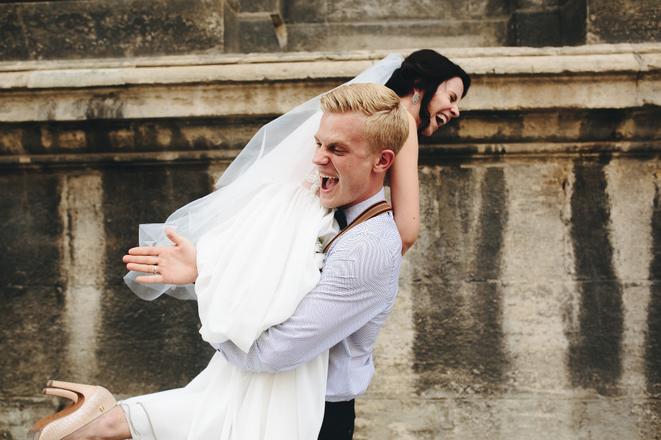It is said that the blossoming cherry tree looks like a young bride (rozkvitnutá čerešna je ako mladá nevesta). This is not a hard comparison to make, considering you can likely find overflowing churches and young brides under blooming trees any spring weekend.
But if you happen to be part of a Slovak wedding (svadba), things can go from this idyllic image to downright strange.
I am going to skip the ceremony because, as my young sister cried out during my aunt's wedding, "this is booooooooring".
After the ceremony, the action heats up, although exactly how varies from region to region. Somewhere between the church vestibule and the banquet (hostina), someone, often the manager of the restaurant or community hall (kultúrny dom), greets the newlyweds (novomanželia) and smashes a plate on the floor. Then the groom (ženích) with a broom and the nevesta with a dustpan must clean up the mess. Their ability to work together to clean up the mess signifies how well they work together in general, and any shards left over foretell of children to come.
Indeed, the coming children are always a subtext to young marriages, and guests often wish the couple a child within the year with the phrase "do roka proroka", literally "in a year prophet".

 If you happen to be part of a Slovak wedding (svadba), things can go from an idyllic image to downright strange. (source: freepik.com)
If you happen to be part of a Slovak wedding (svadba), things can go from an idyllic image to downright strange. (source: freepik.com)